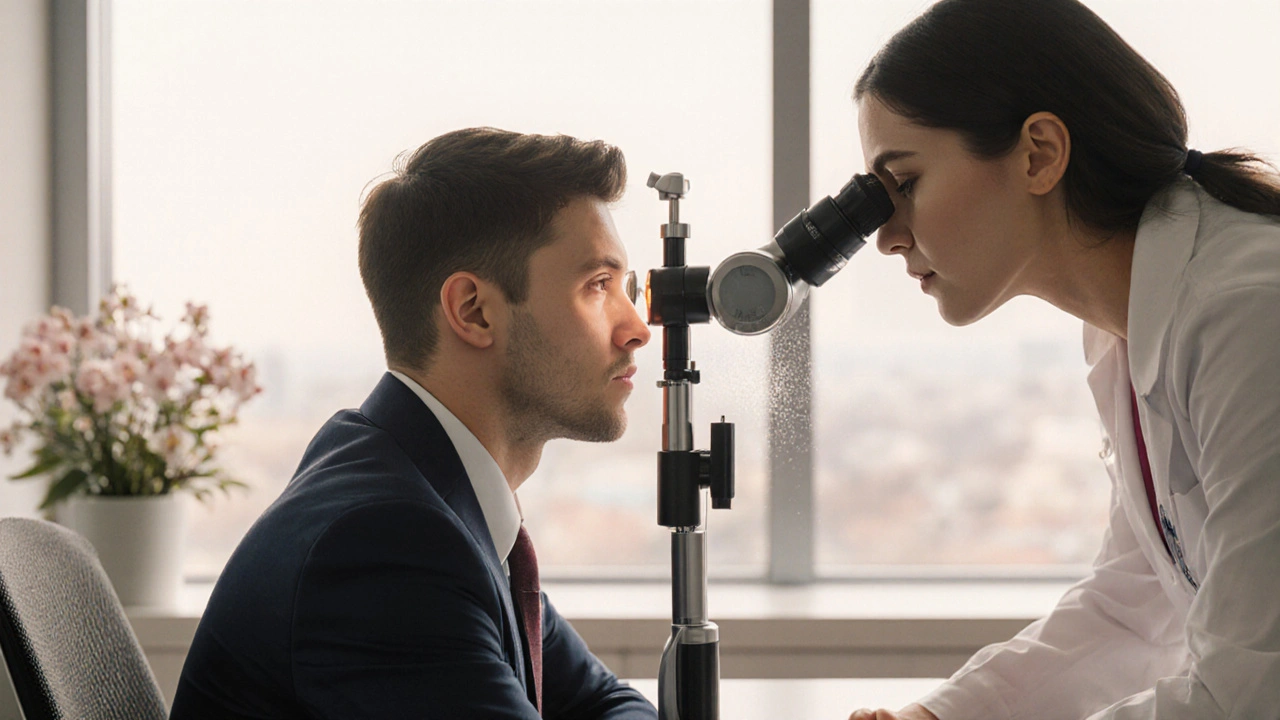
TL;DR
- Both allergic conjunctivitis and dry eye syndrome involve inflammation of the ocular surface.
- Allergic reactions can destabilise the tear film, while a poor tear film worsens allergy symptoms.
- Common triggers include pollen, screen time, and contact‑lens wear.
- Diagnosing both conditions often requires tear‑break‑up time tests and allergen‑specific eye exams.
- Treatment strategies that address inflammation, tear‑film quality, and environmental factors work best for both.
Allergic Conjunctivitis is a hypersensitivity inflammation of the conjunctiva that triggers itching, redness, and watery discharge and Dry Eye Syndrome is a condition where insufficient or poor‑quality tears lead to ocular surface irritation often coexist, creating a vicious cycle of discomfort.
What Happens to the Tear Film During an Allergic Flare?
The Tear Film is a three‑layered liquid coating that lubricates, nourishes, and protects the eye. When allergens such as pollen bind to Histamine receptors on conjunctival cells, mast cells release a burst of Histamine and other inflammatory mediators. This causes the following changes:
- Increased vascular permeability leads to swelling, which compresses the tear‑film lipid layer.
- Evaporation accelerates, shortening the tear‑break‑up time (TBUT).
- Goblet cells reduce mucin secretion, compromising the inner muco‑aqueous layer.
The net result is a destabilised tear film that cannot adequately shield the Ocular Surface (the cornea and conjunctiva), making the eye feel gritty and dry.
How a Dry Eye Environment Amplifies Allergy Symptoms
When the tear film is thin or of poor quality, allergens remain on the ocular surface longer because they are not efficiently washed away. This prolonged exposure intensifies mast‑cell activation and histamine release, which feeds back into the inflammatory loop.
Moreover, Meibomian Gland Dysfunction (MGD) is a frequent contributor to evaporative dry eye. Blocked meibomian glands produce a deficient lipid layer, further increasing tear evaporation. The resulting hyper‑osmolar environment stresses epithelial cells, prompting them to release cytokines that heighten allergic responsiveness.
Shared Risk Factors and Lifestyle Triggers
Both conditions thrive under similar circumstances:
- Environmental allergens: pollen, dust mites, animal dander.
- Prolonged screen use: reduced blink rate lowers tear spread.
- Contact‑lens wear: lenses act as a reservoir for allergens and disrupt tear distribution.
- Air‑conditioning or heating: low humidity accelerates tear evaporation.
- Medications such as antihistamines or antidepressants that have a drying side‑effect.
Identifying which of these you’re exposed to helps tailor a prevention plan that tackles both eye dryness and allergy flare‑ups.
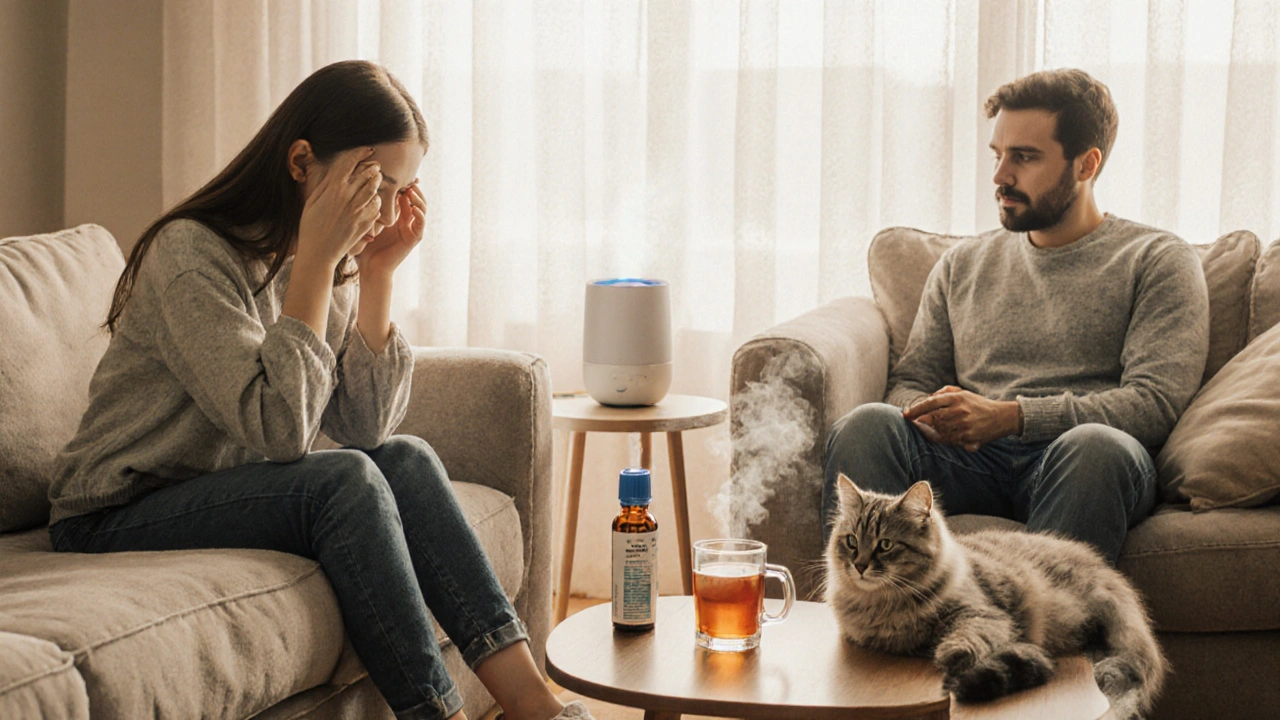
Diagnosing the Overlap: What Clinicians Look For
Eye‑care professionals typically perform a combination of subjective questioning and objective testing.
- History: Timing of symptoms (seasonal vs. chronic), presence of itching, tearing, burning, and visual blur.
- Tear‑Break‑Up Time (TBUT): A fluorescein dye is placed on the eye; the clinician measures how quickly the tear film breaks. Values < 10 seconds suggest dry eye.
- Schirmer Test: Filter paper strips assess tear production volume. Less than 5 mm wetness in 5 minutes indicates aqueous deficiency.
- Allergen‑Specific Conjunctival Test: Diluted allergens are applied to the conjunctiva; a positive reaction confirms allergic conjunctivitis.
- Meibomian Gland Evaluation: Infrared imaging or expression of the glands reveals blockage typical of MGD.
When two or more of these assessments return abnormal, the clinician can diagnose a combined picture of allergic conjunctivitis plus dry eye syndrome.
Management Strategies That Hit Both Targets
Because the two conditions feed each other, a dual‑approach treatment plan works best.
1. Stabilise the Tear Film
- Use preservative‑free Artificial Tears formulated with lipids to replenish the tear‑film’s outer layer.
- Consider Warm Compresses followed by lid massage to improve meibomian gland secretion.
- Increase ambient humidity with a humidifier, especially in winter.
2. Control the Allergic Inflammation
- Topical antihistamine‑mast‑cell stabilisers (e.g., olopatadine) reduce itching and limit histamine release.
- Short courses of low‑dose corticosteroid eye drops for severe flares, under ophthalmic supervision.
- Oral antihistamines that are “non‑sedating” can help systemic allergy symptoms; watch for drying side‑effects.
3. Lifestyle Tweaks
- Take the 20‑20‑20 break: every 20 minutes, look 20 feet away for 20 seconds to boost blink rate.
- Rinse contact lenses with preservative‑free solution and replace them more frequently during high‑pollen seasons.
- Wear wrap‑around sunglasses outdoors to intercept airborne allergens.
Quick Checklist for Everyday Care
- Carry preservative‑free lubricating drops for on‑the‑go relief.
- Keep a daily log of symptom severity and trigger exposure.
- Replace pillowcases and towels weekly to limit dust‑mite buildup.
- Schedule an eye‑exam at least once a year, or sooner if symptoms worsen.
Comparison Table: Symptom Overlap
| Symptom | Allergic Conjunctivitis | Dry Eye Syndrome |
|---|---|---|
| Itching | Very common | Occasional |
| Redness | Diffuse, often with chemosis | Usually mild, peripheral |
| Burning sensation | Less prominent | Frequent, gritty feeling |
| Tearing | Watery discharge | Reflex tearing in severe dryness |
| Blurred vision | Transient, due to mucous | Occurs after prolonged screen time |
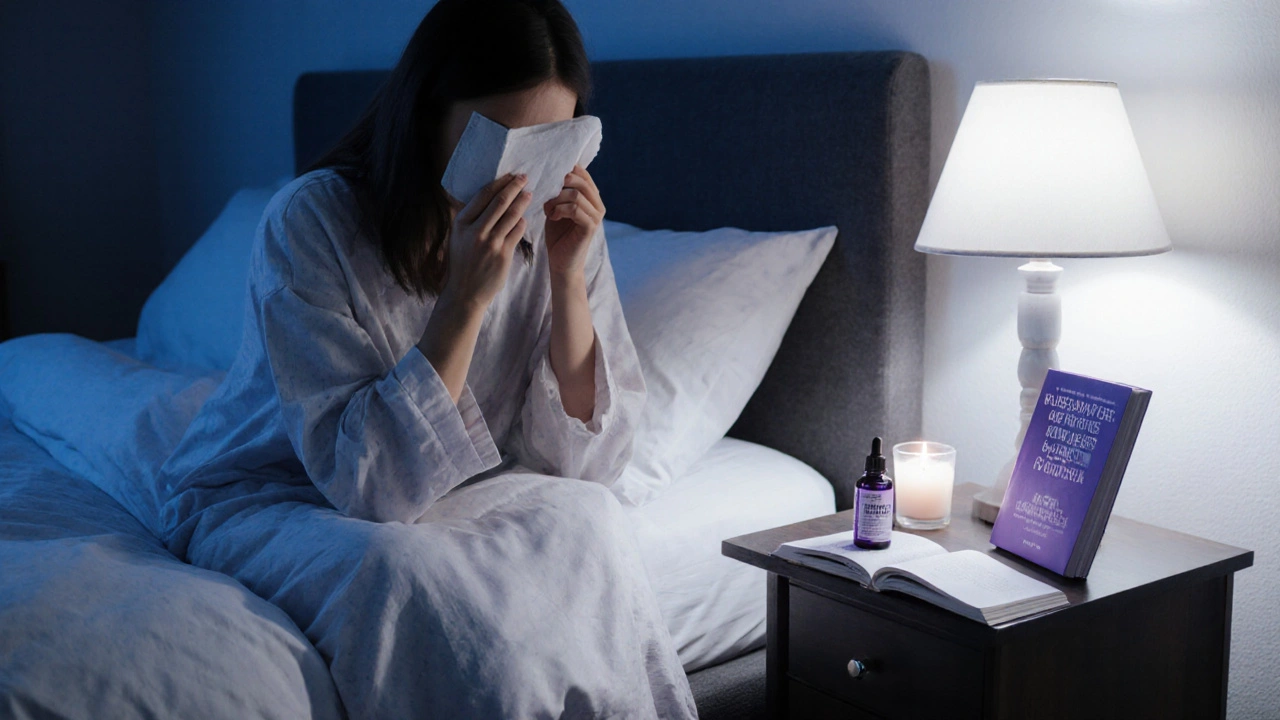
Frequently Asked Questions
Can allergic conjunctivitis cause permanent damage to the eye?
Usually not. The inflammation is acute and resolves with proper treatment. Chronic irritation, however, can lead to epithelial changes if left unmanaged, especially when dry‑eye factors are present.
Do artificial tears worsen allergy symptoms?
Preservative‑free formulations are safe and often help by flushing allergens away. Preserved drops can irritate the ocular surface and should be avoided when you have both conditions.
Is it possible to have dry eye without any obvious dryness?
Yes. Some people experience only burning or foreign‑body sensation while the tear‑film metrics are abnormal. Subtle cases are often uncovered during an eye‑exam.
What role do diet and supplements play?
Omega‑3 fatty acids improve meibomian gland secretions and can reduce inflammation. Adequate hydration and a balanced diet support overall tear‑film health.
When should I see an eye specialist?
If symptoms persist beyond two weeks, interfere with daily activities, or you notice sudden vision changes, book an appointment. Early intervention prevents chronic damage.




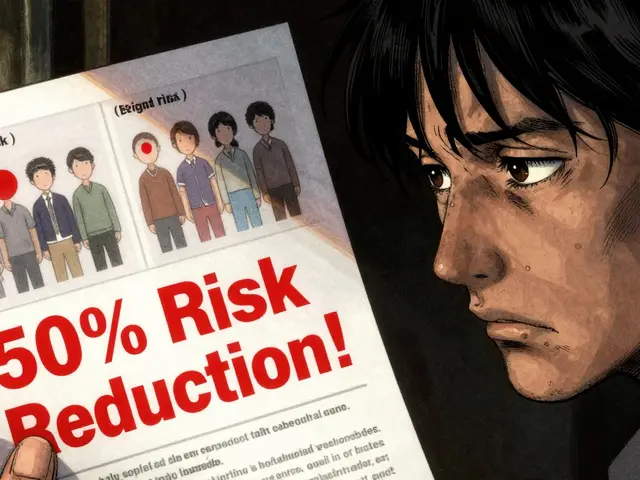
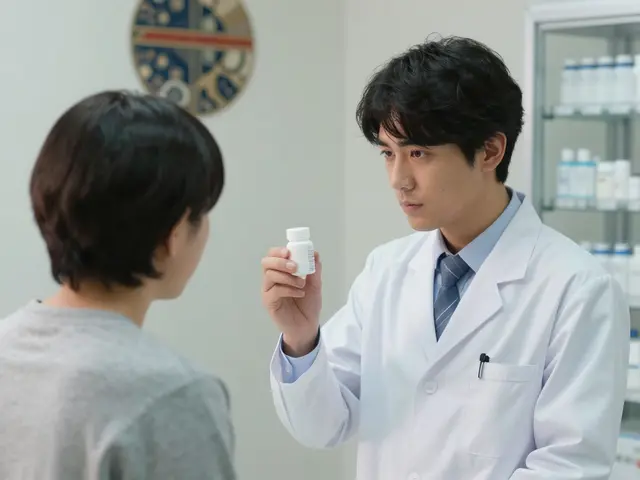

13 Comments
The pathophysiology described for allergic conjunctivitis and dry eye emphasizes the shared inflammatory cascade, yet many clinicians overlook the practical implications of tear‑film destabilisation. By recognising that histamine release directly impairs the lipid layer, practitioners can prioritize interventions that restore barrier function. Moreover, the interplay between mucin deficiency and increased evaporation warrants a dual‑targeted therapy rather than isolated symptom relief. The article correctly identifies environmental triggers, but it could further stress the importance of humidity control in indoor settings. 🌿👁️
Kick‑starting your ocular health regimen with a synergistic blend of anti‑histamine agents and lipid‑rich artificial tears can dramatically overhaul the tear‑film dynamics! Leveraging high‑performance lubricants that mimic natural phospholipids not only curbs evaporation but also cushions the conjunctiva against allergen adherence. Integrate the 20‑20‑20 protocol to enhance blink frequency, and overlay it with strategic humidifier deployment for maximal moisture retention. 🚀💧
When you consider the cyclical nature of ocular surface inflammation, it becomes clear why a holistic approach is indispensable.
Each allergic flare releases histamine, which not only provokes itching but also destabilizes the lipid layer of the tear film.
A compromised lipid layer accelerates evaporation, leading to a shorter tear‑break‑up time that clinicians readily observe.
Conversely, a deficient aqueous component leaves allergens longer on the conjunctival surface, perpetuating mast‑cell activation.
This bidirectional feedback loop explains why patients often report simultaneous redness, burning, and a gritty sensation.
From a therapeutic standpoint, addressing only one side of the equation-such as prescribing antihistamine drops-frequently yields only temporary relief.
Incorporating preservative‑free artificial tears that contain lipids helps re‑establish the outermost barrier and reduces evaporative loss.
Warm compresses paired with lid massage enhance meibomian gland secretion, which in turn restores the lipid layer’s integrity.
Environmental modifications, like using a humidifier and taking regular 20‑20‑20 breaks, mitigate external drying forces.
Patients who diligently log their symptom patterns tend to identify trigger correlations more effectively and can adjust behavior proactively.
Nutritional support, particularly omega‑3 supplementation, has been shown to improve meibomian gland function and dampen inflammatory cytokine production.
Regular follow‑up appointments allow clinicians to monitor tear‑break‑up time and adjust treatment regimens before chronic damage accrues.
It is also advisable to select contact lenses with high oxygen permeability and to replace them more frequently during peak pollen seasons.
Overall, the synergy of anti‑inflammatory medication, tear‑film stabilization, and lifestyle optimization offers the most robust outcomes.
By viewing allergic conjunctivitis and dry eye as two facets of a single ocular surface disorder, practitioners can craft comprehensive care plans that break the vicious cycle.
Ah, the classic "just use drops" mindset-how delightfully simplistic. While your enthusiasm for comprehensive care is commendable, let’s not pretend that every patient has the luxury of perfect compliance. In reality, many individuals balk at the idea of daily warm compresses and meticulous lid massages, citing time constraints and sheer inconvenience. It’s also worth noting that suggesting omega‑3 supplementation without considering dietary restrictions or supplement quality can be, well, a touch naive. Nonetheless, your emphasis on a dual‑targeted strategy does shine a light on an often‑overlooked synergy. Just remember, the best‑designed protocol is moot if patients can’t-or won’t-follow it.
The interdependence of tear‑film stability and allergen clearance underscores the value of preservative‑free lubricants, especially for patients juggling both conditions.
Absolutely, embracing preservative‑free drops is like gifting your eyes a gentle rain after a scorching desert-pure, refreshing, and utterly revitalizing.
Optimism thrives when we recognize that even modest adjustments-such as a humidifier or a brief blink exercise-can dramatically uplift ocular comfort.
Indeed, envision the tear film as a delicate curtain; a sudden gust of allergens tears it apart, yet a soft, steady breeze of consistent care can restore its graceful flow.
Allergies are just a nuisance.
The discourse here perpetuates a superficial treatment paradigm, neglecting the nuanced pharmacodynamics of mast‑cell stabilization-an oversight unbecoming of scholarly rigor.
Well said, but if you actually tried the drops you’d see the difference :) keep it real.
Supporting a comprehensive care plan that blends medical therapy, lifestyle tweaks, and patient education can truly empower individuals to reclaim comfort.
In the grand tapestry of ocular health, balance is the thread that weaves resilience.